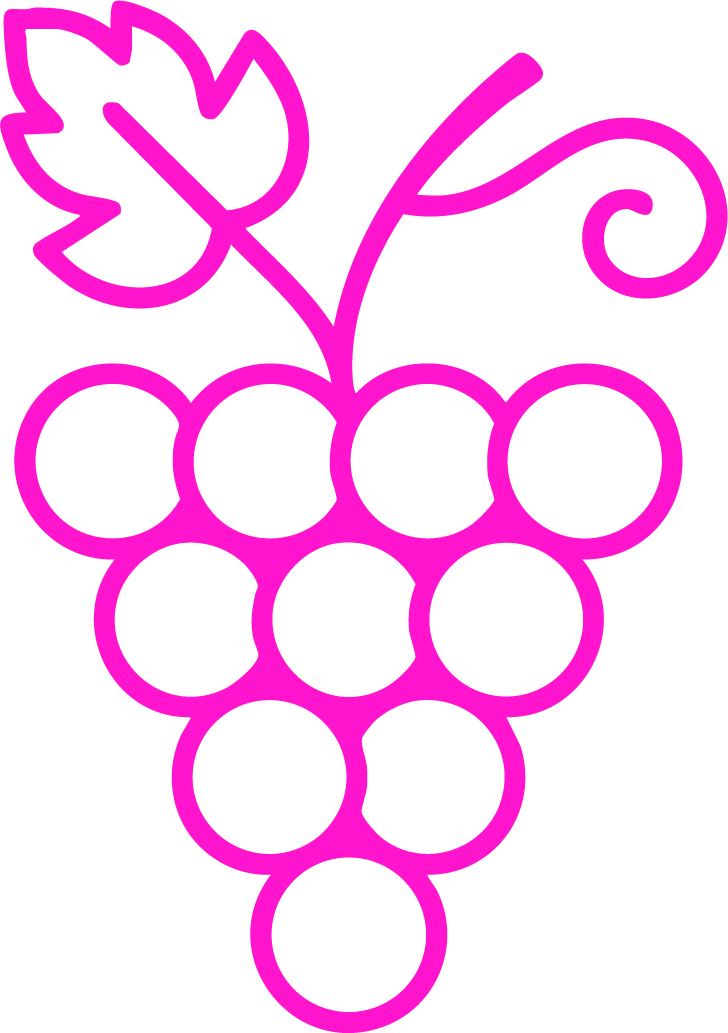Riesling
🔊 Pronunciation: rees-ling
🔍 Quick Summary
Riesling is a highly aromatic, versatile white grape known for its piercing acidity and wide range of sweetness levels — from bone-dry to lusciously sweet.
📜 History
Origin: First documented in 1435 in the Rhine region of Germany — likely a natural cross between Gouais Blanc and a wild Vitis vinifera variety.
Medieval prestige: Valued by German nobility; prized for aging and sweetness.
Spread via monasteries: Monks cultivated it in the Mosel and Rheingau, perfecting high-acid, long-lived wines.
Global decline and comeback: Saw a dip post-WWII due to cheap, sweet exports; now reclaimed as a serious terroir-driven grape.
Modern renaissance: Somms and winemakers champion its purity and ability to reflect place.
🧠 What to Know
Extremely expressive: Riesling is known for its transparency — soil, climate, and winemaking choices shine through.
High acid backbone: Its sharp acidity is key to its freshness and aging potential.
Sweet to dry spectrum: Can range from dry (Trocken) to dessert-level sweet (Trockenbeerenauslese, Ice Wine).
Age-worthy: Develops complex notes like petrol, honey, and dried fruit with time.
Unoaked by tradition: Most Rieslings are made without oak to preserve purity and aromatics.
📍 Where It’s Found
🇩🇪 Mosel, Germany – Slate soils + cool slopes = razor-sharp, floral whites
Cool Climate | 55–70°F (13–21°C) avg daytime highs
🇫🇷 Alsace, France – Granite + dry warmth = dry, spicy, structured styles
Cool-Continental | 60–75°F (16–24°C)
🇦🇺 Clare Valley, Australia – Limestone + high diurnal shift = limey, dry, age-worthy Rieslings
Warm Days, Cool Nights | 70–85°F (21–29°C)
🇺🇸 Finger Lakes, USA – Glacial soils + lake influence = crisp, apple-driven versions
Cool Climate | 55–72°F (13–22°C)
🇦🇺 Eden Valley, Australia – Elevated granite + steady cool temps = elegant, floral profiles
Eden Valley, Australia – Elevated granite + steady cool temps = elegant, floral profiles
👅 Flavor & Style
Electric and aromatic, Riesling dances between citrus zest, orchard fruits, and florals. With age, it evolves into complex honeyed and mineral tones.
Color: Pale straw to golden yellow
Aromas & Flavors:
Primary: Lime, green apple, white peach, jasmine, wet stone
Secondary: Leesy notes (in aged styles), light phenolics
Tertiary: Petrol, honeycomb, dried apricot, marmalade
Structure:
Body: Light to medium
Tannin: None
Acidity: High
Alcohol: Typically 8–12% (can go higher in warmer regions)
🛠 Winemaking Notes
Aromatic preservation and precision define Riesling winemaking.
Cool fermentations to retain delicate floral and fruit aromatics
Stainless steel tanks preferred to avoid flavor interference
Long lees aging adds texture and depth in premium styles
Single-varietal focus emphasizes terroir and transparency
🍽 Food Pairing Ideas
Pairs well with dishes that balance acidity, spice, or sweetness.
Savory: Thai green curry, pork roast, seared scallops
Cheese: Aged gouda, blue cheese, fresh chèvre
Unexpected: Buffalo wings, sushi with wasabi, apple pie
🔗 Related Topics to Explore
🍇 Gewürztraminer – Floral, exotic, and often off-dry
🌍 Residual Sugar – Key to balancing sweetness and acid
🌱 Cool Climate Wines – Higher acid, lower alcohol styles
⚗️ Petrol Aroma – Aged Riesling’s divisive signature scent



